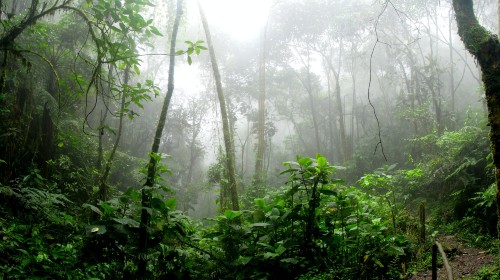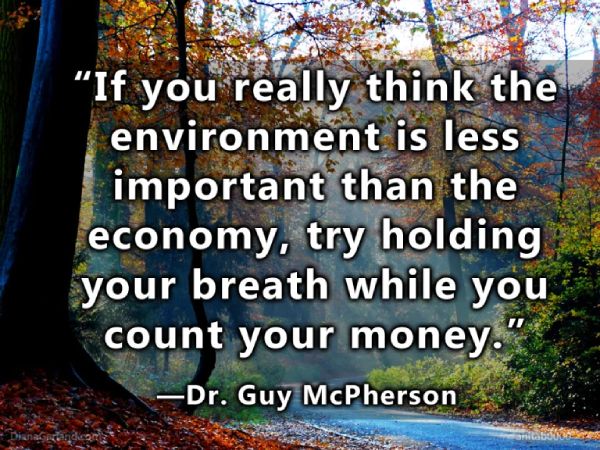LONDON, 7 July, 2021 − Brazilian scientists have identified a new way to take the rain out of the rainforest. All the world has to do is to make sure more carbon dioxide reaches the trees − half as much again as today.
The effect will be stark: it will be roughly the same as if Brazil’s business leaders, politicians and farmers cleared the entire Amazon rainforest and replaced it with cattle pasture.
As climate scientists have been pointing out for years, both processes seem to be happening anyway. The region is already experiencing fire and drought as greenhouse gas emissions continue to rise. And great tracts of the forest are being destroyed, degraded or felled in pursuit of land for soya or beef. What is new is the confirmation that extra carbon dioxide can itself affect the levels of rainfall on the canopy.
That is because most of the rain that in the right season sweeps almost daily over the inland Amazon is not freshly evaporated water from the Atlantic, but condensed from vapour transpired from the forest foliage. As the forest extends inland, most of the rainfall is recycled, again and again. In effect, a great rainforest powers its own repeating sprinkler system. And more carbon dioxide in the atmosphere could limit the flow.
“CO2 is a basic input for photosynthesis, so when it increases in the atmosphere, plant physiology is affected and this can have a cascade effect on the transfer of moisture from trees to the atmosphere, the formation of rain in the region, forest biomass and several other processes,” said David Montenegro Lapola, of the University of Campinas in Brazil.
Double conundrum
The Intergovernmental Panel on Climate Change had already forecast a possible one-fifth reduction in annual rainfall in the region. Professor Lapola and colleagues report in the journal Biogeosciences that they ran computer simulations of the interplay of climate and forest to test two propositions.
One was: what would happen over the next 100 years if the ratio of carbon dioxide in the atmosphere reached 588 parts per million? For most of human history, this ratio hovered around 288ppm. Worldwide, since the global exploitation of fossil fuels began 200 years ago, this ratio has already soared beyond 400 ppm. And under various climate scenarios, the 588 ppm figure could happen by 2050, or 2080.
The second question was: what would happen over a century if the entire forest − it spreads across nine nations − was cleared for grassland? Much of the forest enjoys notional official protection but is still being cleared, lost or degraded anyway.
“To our surprise, just the physiological effect on the leaves of the forest would generate an annual fall of 12% in the amount of rain, whereas total deforestation would lead to a fall of 9%,” Professor Lapola said. “These numbers are far higher than the natural variation in precipitation between one year and the next, which is 5%.”
At the heart of the puzzle of plants and precipitation is the physiology of green growth: the stomata that control the exchange of atmospheric gases on all foliage. These tiny portals open to capture carbon, and emit water vapour. With more CO2 in the atmosphere, they would remain open for shorter spells. The result: less water vapour, reduced cloud formation, lower rainfall.
But there is a second factor: trees are tall and very leafy, with six times the leaf area per square metre of grass, which is low and earthbound. If the entire forest was replaced by pasture, leaf area would be down by two-thirds. And both rising greenhouse gas ratios and deforestation would also influence wind and the movement of the air masses that carry the potential rainfall.
“The forest canopy has a complex surface made up of the tops of tall trees, low trees, leaves and branches. This is called canopy surface roughness. The wind produces turbulence, with eddies and vortices that in turn produce the instability that gives rise to the convection responsible for heavy equatorial rainfall,” Professor Lapola said.
“Pasture has a smooth surface over which the wind always flows forward, and without forest doesn’t produce vortices. The wind intensifies as a result, bearing away most of the precipitation westward, while much of eastern and central Amazonia, the Brazilian part, has less rain.” − Climate News Network
Author
Tim Radford, a founding editor of Climate News Network, worked for The Guardian for 32 years, for most of that time as science editor. He has been covering climate change since 1988.
![]() Don't forget to feed the birds. Donate here
Don't forget to feed the birds. Donate here









